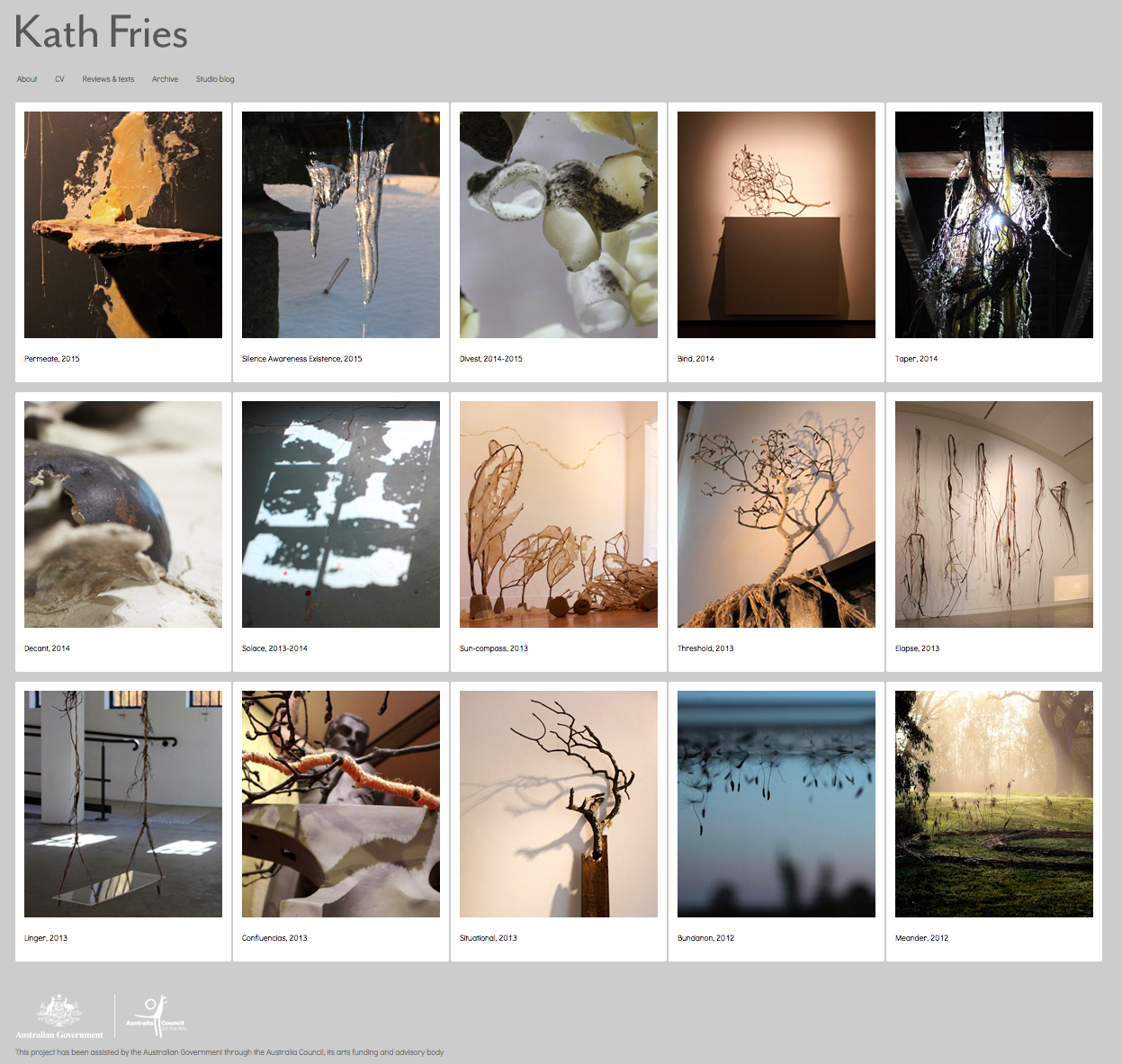 |
| Kath Fries, Divest, 2014, beeswax and ash installation, detail view |
Divest is an installation of beewax and ash, which I created for the New Materialism PhD exhibition at Sydney College of the Arts
Galleries, Rozelle NSW. This work is being exhibited in accompaniment to the SCA Grad School Conference, Tuesday 9 September 2014, where I presented my paper Beeswax – an ancient material in contemporary art.
 |
| Kath Fries, Divest, 2014, beeswax and ash installation |
New Materialism is an emerging trend in 21st century thought in several fields of inquiry, including philosophy, cultural theory, feminism, science studies, and the visual arts. Defined around the primacy of matter and its properties and actions, the New Materialism re-works long-held assumptions about the nature of the stuff of the universe. It responds to the need for novel accounts of agency, nature and social relationships in the contemporary epoch, when new questions have arisen about our place as embodied humans in the world and the ways we produce, reproduce and consume our material environment. In this challenge to invent new ways to understand the contemporary world, the visual arts have a special place given their concern with the manipulation of matter. For the artist or craftsperson in the studio or workshop, New Materialism can articulate and give agency to existing creative processes, and offer opportunities for new modes of authorship and expanded interpretations of materials and objects and our relationships with them.
 |
| Kath Fries, Divest, 2014, beeswax and ash installation |
My interest in New Materialism relates to its consideration of non-human creatures, and all matter, as existing in an interconnected and constantly fluid state of flux, flow and change. This challenges conventional western notions of nature as a separate series of inert stable entities to be exploited by superior humans. The New Materialism discourse sees one of its tasks as creating new concepts and images of nature that affirm matter’s immanent vitality.
 |
| Kath Fries, Divest, 2014, beeswax and ash installation |
This call to rethink how we use and abuse our natural environment, to shift
our human-centric focus to consider that non-human things exist for their own
ends and have not evolved for human use, is conveyed in the New Materialism re-purposing of the
word ‘materiality’ to mean a ‘process’ rather than a ‘thing’.*
 |
| Kath Fries, Divest, 2014, beeswax and ash installation |
Working with a ‘process’
of materiality, which is impermanent and unstable rather than a static series
of separate things, is a notion that resonates in my practice. For me, this process is about reconciling myself
with my surroundings and the world’s inescapable natural cycles of life and
death, destruction and renewal. Since of the death
of my father in 2009, most of my work has in some way related to grieving and
reflecting on death as a natural unavoidable part of life. In turn, my aim to
cultivate an awareness of the vitality of everyday existence reflects a number
of ecological issues and concern for the way that we all often feel inherently
separated from nature. I respond to this by working with a contemplative
process that focuses on embodying sensory experiences of my surroundings, particularly
the fragility and flux of time and materiality.
 |
| Kath Fries, Divest, 2014, beeswax and ash installation |
Divest consists of small empty beeswax funnels clustered
across the wall and smattered with ash, suggesting abandoned containers of
life, hollow shells soon to disintegrate. Made by wrapping warm pieces of
beeswax around my fingers in a healing bandaging gesture, the funnels
are then pressed into the wall in barnacle like clusters, clinging together at
various angles. Impressions of my fingers remain on the wax surfaces, even as
they become cold and brittle.
 |
| Kath Fries, Divest, 2014, beeswax and ash installation, detail view |
Embedded in the work is the symbolism of the materials themselves, the
beeswax speaks of the hive, the bees’ honeycomb home, as a nurturing life force
for the bees and their vital role in ecosystems. The ash is a symbol of
grieving, ritual and cremation.
 |
| Kath Fries, Divest, 2014, beeswax and ash installation |
The ways the honeybees build and adjust their wax-comb designs responses directly to the colony's' changing needs, and is integral to the communication and successful functioning of the super organism that is the beehive. All elements of the hive – worker bees, forager bees, queen bee, larvae, baby bees, drones, wax comb, temperature, form and space, nectar, honey and pollen – are interconnected and interdependent. The complex ecology of the world can be likened to the super organism of a beehive, where humanity is like a few foraging honeybees that cannot survive alone, separated from nature, outside the hive.
 |
| Kath Fries, Divest, 2014, beeswax and ash installation |
My interest in the ways that we can understand an embodied engagement with time, materiality and nature, through the sensory experience of art, reflects New Materialism’s vitality. This takes a positive approach to the potential for change in human attitudes, proposing that we have the intelligence and creativity to re-engage with nature, and the complex interconnections of our world.
 |
| Kath Fries, Divest, 2014, beeswax and ash installation |
The exhibition continues to 27 September 2014, open Monday to Saturday 11am - 5pm






















































%2BWhite%2C%2BBRANCH%2B3d.jpg)














.jpg)














